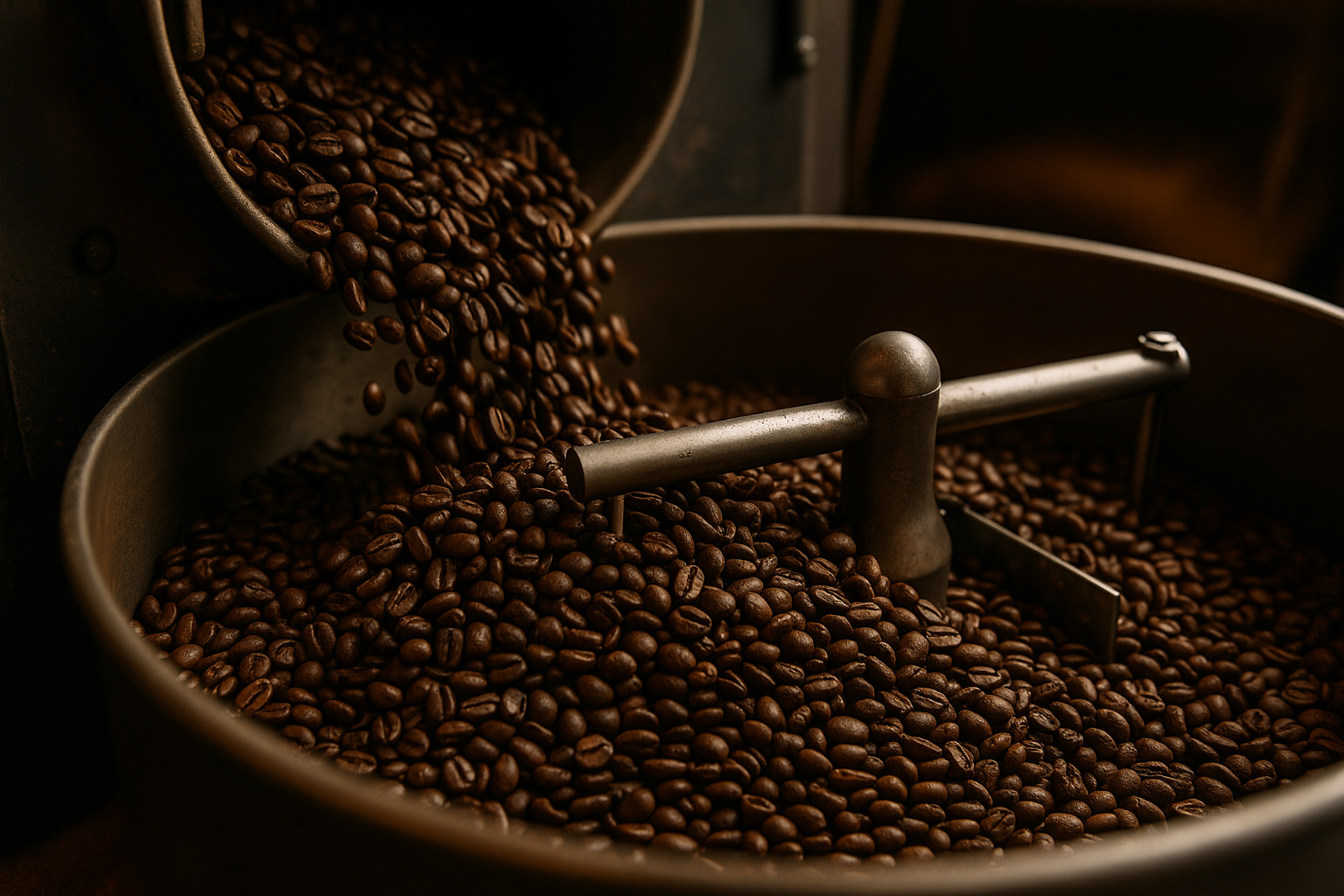Coffee roasting is often described as the soul of the coffee experience. While the quality of the beans, their origin, and the brewing method all play a role in shaping the final cup, roasting is where the green coffee seed undergoes a dramatic transformation.
Without roasting, coffee would remain a bitter, grassy seed with little aroma or flavor. It is through roasting that beans develop their unique taste, aroma, and character.
Understanding how roasting influences coffee flavor not only deepens appreciation for the beverage but also helps you make more informed choices about the coffee you enjoy every day.
What Happens During Roasting
Roasting is a complex process in which heat transforms raw green beans into aromatic, brown coffee beans ready for brewing. During this process, several chemical reactions occur:
- Moisture evaporation: Green beans contain water that evaporates as heat is applied, causing them to expand and crack.
- The Maillard reaction: This reaction between amino acids and sugars creates hundreds of flavor compounds, similar to the browning of bread or searing of meat.
- Caramelization: Natural sugars break down, releasing sweetness and adding complexity.
- Development of aroma: Over 800 aromatic compounds are formed, contributing to coffee’s unique fragrance.
These reactions are carefully managed by roasters to emphasize or minimize certain characteristics. A few seconds or degrees of difference in roasting can completely change the profile of the coffee.
The Stages of Roasting
Roasting is often divided into key stages, each one shaping the flavor of the beans.
Drying Stage
This is the first stage, where beans lose moisture and begin to turn yellow. Aromas of hay or grass are common at this point.
First Crack
As water vapor escapes, the beans crack audibly. This marks the transformation from raw seed to drinkable coffee. At this stage, light roast characteristics emerge.
Development Stage
This is the period after the first crack, where flavors deepen. Roasters decide whether to stop here for a light roast, continue for a medium roast, or push further for a dark roast.
Second Crack
If roasting continues, another audible crack occurs as oils move to the surface. This is where dark roast flavors, such as smokiness and bold bitterness, develop.
Light Roast: Bright and Delicate
Light roasts preserve much of the bean’s natural flavor, often reflecting its geographic origin. Because they undergo less roasting time, their acidity and delicate notes stand out.
- Flavor profile: Floral, fruity, citrusy, sometimes tea-like.
- Acidity: High, crisp, and lively.
- Body: Light and clean.
- Best brewing methods: Pour-over, drip, and Chemex highlight the clarity of light roasts.
Medium Roast: Balanced and Sweet
Medium roasts strike harmony between the bean’s natural flavors and roast development. This balance makes them the most popular choice among coffee drinkers.
- Flavor profile: Caramel, chocolate, nuts, mild fruitiness.
- Acidity: Moderate, smooth, and approachable.
- Body: Medium, round, and balanced.
- Best brewing methods: French press, drip, espresso, or cold brew.
Dark Roast: Bold and Smoky
Dark roasts highlight the flavors of the roasting process itself more than the bean’s origin. The result is strong, bold coffee with a heavier body.
- Flavor profile: Smoky, chocolatey, roasted nuts, sometimes bitter or spicy.
- Acidity: Low to almost none.
- Body: Heavy and full.
- Best brewing methods: Espresso machines and moka pots emphasize the intensity of dark roasts.
Roast Levels and Their Impact on Flavor
- Aroma: Light roasts smell fruity or floral, medium roasts are sweet and nutty, while dark roasts have smoky, toasted aromas.
- Sweetness: Caramelized sweetness peaks in medium roasts.
- Bitterness: Increases with darker roasts. While pleasant in moderation, over-roasting can lead to burnt flavors.
- Acidity: Prominent in light roasts, balanced in medium, and minimal in dark roasts.
How Roasting Shapes Coffee Identity
Every coffee origin has its own inherent qualities. Ethiopian beans might be floral and fruity, Brazilian beans often nutty and chocolatey, while Indonesian beans are earthy and bold. Roasting either highlights or masks these traits:
- Light roasts emphasize terroir, showcasing the bean’s origin.
- Medium roasts create balance between natural bean flavors and roast development.
- Dark roasts prioritize roast-driven notes, reducing differences between origins.
This is why two coffees from different countries might taste similar if roasted very dark, but very different if roasted light.
The Art and Science of Roasting
Roasting is both technical and artistic. Roasters monitor temperature, time, and airflow carefully, but intuition also plays a role.
Decisions such as when to stop roasting, how quickly to increase heat, or how to handle airflow determine whether the beans taste bright, balanced, or bold. Small adjustments can mean the difference between a lively coffee with fruity notes and a flat, burnt cup.
Choosing the Right Roast for Your Taste
- If you enjoy vibrant, tea-like coffee, choose light roasts.
- If you prefer balance, sweetness, and versatility, medium roasts are ideal.
- If you crave bold, smoky flavors with little acidity, dark roasts are your best option.
Trying different roasts of the same bean is a great way to understand how roasting impacts flavor.
Final Thoughts
Roasting is the defining stage in coffee’s journey from a green seed to the flavorful beverage enjoyed worldwide. It unlocks aromas, sweetness, body, and complexity, shaping every cup we drink.
From the lively brightness of light roasts to the balanced richness of medium roasts and the bold intensity of dark roasts, roasting is the key to unlocking coffee’s diversity.
By learning about the role of roasting, you not only gain appreciation for the skill of professional roasters but also discover how to choose the roast that best matches your taste. Coffee is a world of flavors, and roasting is the bridge that connects the raw bean to your cup.
